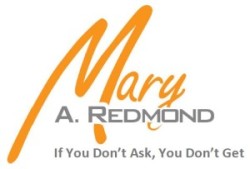Recently, a well-known printing industry consultant, Larry Hunt, and I were discussing why leasing companies that cater to printers are increasing their lease rates for the first time in many years.
I thought it would be helpful for Larry and other business owners, CFOs controllers and those who lease equipment and perform the lease vs. buy analysis for their companies to understand what goes into a lease rate factor.
True or False:
Interest rates must be increasing if lease rates are going up.FALSE: Since the year 2000, long-term interest rates have dropped dramatically. In 2000, the three-year Treasury Constant Maturity was 6.22%. In October 2009 that same rate was 1.46%, a drop of 476 basis points.
If the cost of money is down, why are lease rates increasing?
Lease rates are set by leasing companies based on a number of factors. Many of today’s increases are due to the entire lending and economic condition of our country. Leasing is not exempt.
Here are 10 components of your lease rate.
1. Cost of Funds: At what interest rate does the leasing company borrow its funds? If the bank is in trouble, it may have a high borrowing rate.
2. Lease Term: How long is the lease length? Most leases range from 24-60 months. The longer the lease term, the higher the leasing company’s borrowing rate. Lessors pass their higher borrowing cost to you in higher lease rates.
3. Residual: How much residual risk is the leasing company willing to take on the equipment? Technology equipment such as desktop and laptop computers, servers and storage equipment support 3% to 12%. The higher the residual, the lower the lease rate and your payment.
4. Resale Market: What is the condition of the used equipment resale market? With businesses failing at record rates, the used equipment market is flooded with repossessed and off-lease equipment. The more used equipment available, the lower the residual and the higher your payments.
5. Equipment Useful Life: If you are leasing long-term manufacturing equipment, your leasing company must understand long-lived assets. If it does not, it will offer you a shorter lease term and higher payments.
6. Deal Size: How much do you plan to borrow? Traditionally the more money you need, the lower the borrowing rate. The lease rate per $1,000 is higher to lease $100,000 than $1,000,000 of equipment.
7. Depreciation: Will the leasing company depreciate the equipment? If not, you will pay a higher lease rate than with a lessor who can utilize the depreciation.
8. Credit Strength: How financially strong is your company? The leasing credit market is in rough shape now. The Equipment Leasing and Finance Association’s (ELFA) monthly Leasing and Finance Index released December 23, 2009 reported that lease application volume for new lease business was down 7% compared to the same period in 2008. Leases over 30 days delinquent are up 15% and one in every three lease applications is declined. Read ELFA’s full press release here.
9. Industry Expertise: If the leasing company does not understand your industry, trends and issues as well as the equipment, your application is more likely to be declined.
10. Manufacturer Support and Guarantees: Is the manufacturer guaranteeing the lease? If your company is financially weak, this is good. This guarantee often will gain you a lower lease payment.
And you thought it was only about interest rates!

